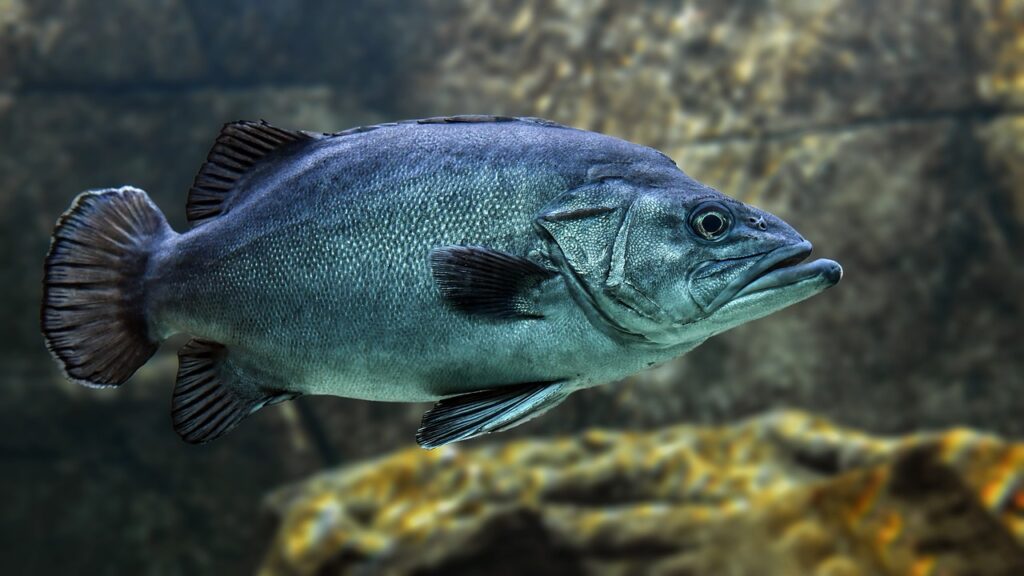Lesser-Known Fish stands out not only for its delicious taste but also for its myriad health benefits. While popular varieties like salmon and tuna often steal the spotlight, there exists a treasure trove of lesser-known fish with unique health advantages waiting to be explored. In this article, we dive deep into the world of these hidden gems, uncovering their nutritional value and the benefits they offer to our well-being.
Amidst the bustling marine world, fish varieties like sardines, anchovies, and mackerel often go unnoticed, yet they pack a powerful punch of nutrients. Rich in omega-3 fatty acids, calcium, and vitamin D, these small wonders contribute to heart health, bone strength, and overall vitality.
Delving further, herring emerges as another unsung hero, boasting a bounty of omega-3s, vitamin B12, and selenium—a trifecta of nutrients essential for nerve function, energy production, and immune support. Meanwhile, rainbow trout and Arctic char, with their delicate flavors and robust nutritional profiles, offer a delightful fusion of omega-3s, protein, and essential vitamins and minerals.

Beyond the familiar, barramundi and tilapia make waves with their unique contributions to health and wellness. Barramundi, also known as Asian sea bass, charms with its omega-3 richness and vitamin D content, promoting heart health and immune function. Meanwhile, tilapia, often underestimated, proves its worth as a lean protein source, ideal for weight management and muscle maintenance.
Incorporating these lesser-known fish varieties into our diets not only introduces a delightful array of flavors but also ensures a diverse intake of nutrients essential for optimal health. Whether grilled, baked, or pan-seared, these ocean treasures offer a delicious and nutritious feast for both body and soul.
Contents
- 1 1.Understanding Lesser-Known Fish Varieties
- 2 2. Discovering the Diverse World of Fish
- 3 3.Health Benefits of Lesser-Known Fish
- 4 4.Exploring Unique Health Benefits
- 5 5.Incorporating Lesser-Known Fish into Your Diet
- 6 7.Shopping and Sustainability
- 7 8.Potential Risks and Precautions
- 8 9.Conclusion
- 9 10.Frequently Asked Questions (FAQs)
- 9.0.1 1. Are lesser-known fish varieties as nutritious as more popular options like salmon and tuna?
- 9.0.2 2. How can I incorporate lesser-known fish into my diet if I’m not familiar with cooking seafood?
- 9.0.3 3. Are there any sustainability concerns associated with consuming lesser-known fish?
- 9.0.4 4. Can I still enjoy the health benefits of fish if I’m vegetarian or vegan?
- 9.0.5 5. Are there any specific precautions I should take when introducing new fish varieties into my diet?
1.Understanding Lesser-Known Fish Varieties
This article explores lesser-known fish varieties, including sardines, anchovies, and mackerel, which offer unique flavors, textures, and nutritional benefits. Sardines, anchovies, and mackerel are rich in omega-3 fatty acids, calcium, and vitamin D, which are beneficial for cardiovascular health, bone strength, and overall well-being.
Herring, rainbow trout, and Arctic char are nutritional powerhouses with high levels of omega-3s, vitamin B12, and selenium, essential for neurological function, energy metabolism, and immune support. Rainbow trout and Arctic char offer a blend of omega-3s, protein, and essential vitamins and minerals. Barramundi and tilapia also offer unique nutritional benefits, promoting heart health and immune function, and providing lean protein for weight management and muscle development. Exploring these hidden gems offers a flavorful and nutritious addition to any meal.
2. Discovering the Diverse World of Fish
The diversity of fish is a testament to the rich biodiversity of our oceans, rivers, and lakes. Each species brings unique characteristics to the table, captivating both the palate and the imagination. Tropical fish, such as the regal tang and emperor angelfish, offer a spectrum of flavors from delicate to bold. Cold-water fish, like salmon and cod, are firm and succulent, infused with rich, savory notes that evoke the rugged beauty of their marine habitats.
These fish can be smoked, grilled, or poached, highlighting their natural flavors and textures. Freshwater fish, like trout and catfish, offer a taste of their tranquil rivers and lakes, with tender and mild flesh reflecting their aquatic environments. These delicacies can be pan-fried with herbs and butter or roasted with seasonal vegetables. The diversity of fish extends beyond mere sustenance, celebrating the natural world and the kaleidoscope of flavors and textures that our planet has to offer Lesser-Known Fish Varieties
While some fish, like salmon and cod, enjoy widespread popularity, others remain relatively obscure to the average consumer. These lesser-known varieties often boast unique nutritional profiles and health benefits that make them worthy additions to any diet.
3.Health Benefits of Lesser-Known Fish
Now explores the hidden health benefits of lesser-known fish species, including the sardine, anchovies, mackerel, and freshwater fish. Sardines are small yet mighty fish rich in omega-3 fatty acids, calcium, and vitamin D, which support heart health, strengthen bones, and boost immunity. Anchovies, often overshadowed by their more prominent counterparts, offer a wealth of health benefits in their own right, rich in omega-3s, protein, and essential minerals like iron and magnesium. Mackerel, a lesser-known fish, is revered for its high omega-3 content and abundance of vitamin B12, crucial for nerve health and red blood cell production. Its robust flavor and nutritional density showcase the untapped potential found within lesser-known fish varieties.
Freshwater fish like trout and tilapia also offer unique contributions to health and well-being. They are rich in protein, omega-3s, and essential vitamins and minerals, providing a nutritious boost to support muscle growth, brain function, and overall vitality.
Incorporating these lesser-known fish varieties into our diets not only diversifies our culinary repertoire but also enriches our nutritional intake, positively impacting our health for years to come. The article encourages readers to explore the hidden depths of the ocean and embrace the lesser-known treasures beneath the waves.
Lesser-Known Fish– Rich in Essential Nutrients
Fish is a nutritional powerhouse, providing essential nutrients for maintaining optimal health and well-being. It is an excellent source of high-quality protein, which is easily digestible and promotes muscle development and satiety. Fish is also a rich source of omega-3 fatty acids, including EPA and DHA, which are essential for brain, heart, and reducing inflammation. These fatty acids are crucial for cognitive function, cardiovascular function, and may reduce the risk of chronic diseases like heart disease and arthritis.

Fish is rich in vitamins and minerals, including vitamin D, vitamin B12, selenium, iodine, and zinc. Vitamin D is essential for bone health, immune function, and overall well-being, while vitamin B12 is crucial for nerve function and red blood cell production. Selenium, iodine, and zinc are important for thyroid function, immune support, and maintaining a healthy metabolism. Fish is also low in saturated fat and cholesterol, making it a beneficial source of protein for a balanced diet.
Fish offers a wide range of culinary options, from delicate white fish like cod and tilapia to oily fish like salmon and mackerel. These can be prepared in various ways to suit different tastes and preferences, making it a versatile and delicious addition to any diet. Incorporating fish into your diet provides a well-rounded nutritional package that supports overall health and well-being.
Lesser-Known Fish– Omega-3 Fatty Acids: A Key Player
Absolutely! Omega-3 fatty acids, specifically EPA (eicosapentaenoic acid) and DHA (docosahexaenoic acid), play critical roles in supporting heart health, brain function, and inflammation management. While many people associate omega-3s primarily with popular fish like salmon and tuna, lesser-known fish varieties are also rich sources of these beneficial fats, making them excellent choices for maintaining cardiovascular health and cognitive function.
Fish such as sardines, anchovies, mackerel, and herring are often overlooked but are actually abundant sources of EPA and DHA. These fatty acids are essential for reducing the risk of heart disease by lowering triglyceride levels, reducing blood pressure, and preventing the formation of blood clots. Additionally, EPA and DHA have anti-inflammatory properties, which can help alleviate symptoms of inflammatory conditions like arthritis and promote overall well-being.

Incorporating these lesser-known fish varieties into your diet can provide a significant boost of omega-3 fatty acids, supporting heart health, brain function, and inflammation management. Whether grilled, baked, or added to salads or pasta dishes, these fish offer a delicious and nutritious way to ensure you’re getting an adequate intake of these crucial nutrients. By diversifying your seafood choices and including a variety of fish in your meals, you can reap the full benefits of omega-3 fatty acids while enjoying a flavorful and satisfying diet.
Lesser-Known Fish –Low in Mercury Content
Absolutely! One notable advantage of choosing lesser-known fish varieties is their typically lower mercury levels compared to larger predatory fish. This makes them safer options for regular consumption, particularly for vulnerable populations such as pregnant women and young children.
Mercury is a heavy metal that accumulates in the bodies of fish, particularly in larger predatory species that consume smaller fish. Over time, mercury levels can become concentrated in these fish, posing potential health risks if consumed in large quantities. Pregnant women, in particular, are advised to limit their intake of high-mercury fish due to the potential harm it can pose to fetal development.
However, many lesser-known fish species are lower on the food chain and therefore accumulate less mercury. Sardines, anchovies, mackerel, herring, and other smaller fish tend to have lower levels of mercury, making them safer choices for regular consumption.
By choosing these fish varieties, individuals can enjoy their health benefits—including omega-3 fatty acids, protein, vitamins, and minerals—without the added risk of mercury toxicity. This is especially important for pregnant women, nursing mothers, and young children, who may be more susceptible to the harmful effects of mercury exposure.
In summary, opting for lesser-known fish varieties can provide a safe and nutritious alternative to larger predatory fish, allowing individuals to reap the health benefits of seafood while minimizing the risks associated with mercury consumption. It’s important to prioritize variety in your seafood choices and consume a diverse range of fish to maximize nutritional benefits and minimize potential health risks.
Lesser-Known Fish- Unique Health Benefits Across Varieties
Fish species offer unique health benefits beyond the general advantages of fish consumption. Some lesser-known fish varieties include sardines, anchovies, mackerel, herring, rainbow trout, and Arctic char. Sardinias are packed with omega-3 fatty acids, calcium, and vitamin D, promoting bone health, heart health, and immune function.

Anchovies are rich in protein and vitamin B12, supporting energy levels and nerve health. Mackerel is known for its high omega-3 content, reducing inflammation, supporting heart health, and improving cognitive function. Herring is rich in omega-3 fatty acids, vitamin B12, and selenium, beneficial for heart health, brain function, and immune function.
Astaxanthin, a powerful antioxidant, may help reduce the risk of chronic diseases and support skin health. Rainbow trout is a rich source of omega-3 fatty acids, protein, and essential vitamins and minerals, supporting heart health, muscle development, and overall vitality. Arctic char is effective in reducing inflammation, supporting bone health, and boosting immune function. Each fish variety brings its own unique nutritional profile, contributing to overall wellness in its own special way.
4.Exploring Unique Health Benefits
Mackerel: Heart Health Booster
Mackerel is known for its high omega-3 fatty acid content, particularly EPA and DHA. These fatty acids are crucial for maintaining cardiovascular health and reducing the risk of heart disease and stroke. Regular consumption of mackerel can lower triglyceride levels, which are a risk factor for cardiovascular disease. Additionally, omega-3 fatty acids have potent anti-inflammatory properties, helping to reduce inflammation throughout the body. Chronic inflammation is linked to various cardiovascular conditions, including atherosclerosis, hypertension, and coronary artery disease.
Regular consumption of mackerel can significantly improve cardiovascular health by lowering triglyceride levels, reducing inflammation, and supporting overall heart function. This can lead to a healthier heart and a lower risk of heart disease and stroke. In addition to its omega-3 content, mackerel is a good source of protein, vitamin D, and selenium, all of which play important roles in maintaining cardiovascular health and overall well-being.
Incorporating mackerel into a balanced diet can be an effective way to support heart health, lower the risk of heart disease and stroke, and promote overall cardiovascular well-being. However, it is essential to consume mackerel as part of a varied diet, along with other nutritious foods, to maximize its health benefits and ensure overall dietary balance.
Sardines: Brain Powerhouse
Sardines are a rich source of essential nutrients, including omega-3 fatty acids, vitamin B12, selenium, and other essential vitamins, which are crucial for brain health and cognitive function. These fatty acids, particularly EPA and DHA, are essential for brain structure and function, particularly in neuronal signaling, synaptic function, and neurotransmitter production. Regular consumption of these fatty acids can improve memory, enhance cognitive function, and support overall brain performance.
Vitamin B12 is another essential nutrient, crucial for neurological function and neurotransmitter synthesis. Sardines are rich in vitamin B12, which helps maintain nerve cell health and support the production of myelin, a protective sheath around nerve fibers. Adequate intake of vitamin B12 from sardines can prevent cognitive decline, improve mood, and support mental clarity and focus.
Sardines also contain selenium, an antioxidant mineral with antioxidant properties, which helps protect brain cells from oxidative stress and inflammation, which can contribute to cognitive decline and neurodegenerative diseases. Incorporating sardines into your diet can be a simple and effective way to support brain health and enhance cognitive function. They are a delicious and nutritious source of essential nutrients that nourish the brain and promote optimal mental well-being.
Anchovies: Bone Strength Supporter
Anchovies are a rich source of essential nutrients, including calcium, vitamin D, and phosphorus, which are crucial for maintaining strong bones and teeth. Calcium is essential for bone formation, providing structural support and strength to the skeletal system. Adequate calcium intake is crucial throughout life, especially as we age, to prevent osteoporosis, a condition characterized by weak and brittle bones. Incorporating anchovies into your meals can boost your calcium intake and support optimal bone health.
Vitamin D is also a key component of anchovies, playing a key role in calcium absorption and bone mineralization. Adequate vitamin D intake is essential for preventing bone loss and maintaining bone density, particularly in older adults who may be at higher risk of vitamin D deficiency. By including anchovies in your diet, you can ensure sufficient vitamin D levels to support bone health and prevent osteoporosis.
Phosphorus is another important mineral found in anchovies, contributing to bone health by forming the structural framework of bones and teeth, providing strength and rigidity to the skeletal system. It also plays a role in energy metabolism, cell signaling, and maintaining pH balance in the body.
Incorporating anchovies into your meals can be a delicious and convenient way to reap the bone-strengthening benefits of calcium, vitamin D, and phosphorus.
Rainbow Trout: Skin Savior
Rainbow trout is a rich source of protein and omega-3 fatty acids, which can promote healthy skin by reducing inflammation and supporting collagen production. These fatty acids, including EPA and DHA, have powerful anti-inflammatory properties that help reduce inflammation and improve overall skin health. Collagen production is another important aspect of skin health, as it provides structure and elasticity to the skin, helping it maintain firmness and smoothness. As we age, collagen production naturally declines, leading to wrinkles, sagging, and loss of elasticity. Consuming omega-3 fatty acids from rainbow trout can stimulate collagen synthesis, promoting skin elasticity and reducing the appearance of fine lines and wrinkles.
Protein is another essential component of rainbow trout, providing the building blocks needed for skin repair and regeneration. Adequate protein intake from sources like rainbow trout can support healthy skin by ensuring proper tissue turnover and renewal. Incorporating rainbow trout into your diet can be a delicious and nutritious way to support skin health and achieve a radiant complexion. By enjoying rainbow trout regularly as part of a balanced diet rich in omega-3 fatty acids and protein, you can improve skin elasticity, hydration, and overall appearance, resulting in a glowing complexion.
Herring: Mood Enhancer
Herring is a rich source of omega-3 fatty acids, particularly EPA and DHA, which are essential for brain health and mood regulation. These fatty acids regulate mood, reduce symptoms of depression and anxiety, and promote emotional well-being. EPA, which has anti-inflammatory and neuroprotective effects, can help alleviate symptoms of depression by modulating brain inflammation and neuroplasticity. DHA, on the other hand, maintains the structural integrity of brain cell membranes and supports cognitive function, indirectly influencing mood regulation.
Regular consumption of herring as part of a balanced diet rich in omega-3 fatty acids may also promote emotional well-being and resilience to stress. These fatty acids reduce stress hormone production, enhance the body’s ability to cope with stressors, and may have anti-anxiety effects by modulating neurotransmitter systems involved in the stress response.
Incorporating herring into meals can be a delicious and convenient way to increase your intake of omega-3 fatty acids and support mood and emotional well-being. Herring can be enjoyed grilled, smoked, or pickled, and by regularly incorporating herring into your diet, you can harness the mood-boosting benefits of omega-3 fatty acids and nourish your mind and body from the inside out.
5.Incorporating Lesser-Known Fish into Your Diet
Tips for Cooking and Serving
Indeed, lesser-known fish varieties offer a wide range of culinary possibilities, and experimenting with different cooking methods and flavor combinations can unlock their full potential. Here’s why:
- Versatility: Lesser-known fish varieties, such as sardines, anchovies, mackerel, and herring, are incredibly versatile and can be prepared in various ways to suit different tastes and preferences. Whether grilled, baked, pan-seared, or even pickled or smoked, these fish can be transformed into delicious dishes that appeal to a wide range of palates.
- Flavor Absorption: One of the advantages of cooking with lesser-known fish is their ability to absorb and complement flavors from herbs, spices, marinades, and sauces. Their mild yet distinctive flavors make them perfect canvases for experimenting with different seasonings and ingredients. From tangy citrus marinades to aromatic herb rubs, the possibilities for flavor combinations are endless.
- Texture Variations: Depending on the cooking method used, lesser-known fish varieties can offer a variety of textures, from tender and flaky to crisp and caramelized. Grilling or pan-searing can create a crispy exterior while retaining the fish’s moistness and flavor. Baking or roasting can result in tender and succulent fish with a delicate texture. By exploring different cooking techniques, you can discover the texture that best suits your preferences.
- Health Benefits: Cooking methods like grilling, baking, and pan-searing require minimal added fats, making them healthier options for preparing fish. By avoiding deep frying or heavy breading, you can retain the nutritional integrity of the fish while still enhancing its flavor and texture. This allows you to enjoy the health benefits of lesser-known fish varieties without compromising on taste or nutritional value.
- Creativity and Exploration: Experimenting with different cooking methods and flavor combinations allows you to unleash your creativity in the kitchen and explore new culinary horizons. Whether you’re a seasoned chef or an amateur cook, cooking with lesser-known fish varieties offers an opportunity for culinary adventure and discovery. You can draw inspiration from various cuisines and cooking traditions to create unique and memorable dishes that showcase the deliciousness of these nutritious delicacies. whether you prefer the bold flavors of grilled mackerel, the delicate textures of baked herring, or the savory richness of pan-seared anchovies, lesser-known fish varieties offer endless culinary possibilities. By experimenting with different cooking methods and flavor combinations, you can discover your favorite ways to enjoy these nutritious and delicious delicacies while reaping the health benefits they provide.
Recipe Ideas for Delicious Meals
The culinary world is filled with a multitude of recipes that showcase the versatility and deliciousness of lesser-known fish varieties. From zesty fish tacos to flavorful fish curry, there are endless possibilities to explore. Here are a few examples of dishes that highlight the unique flavors and textures of these underrated gems:
- Zesty Fish Tacos: Whip up some zesty fish tacos using grilled or pan-seared mackerel, sardines, or tilapia. Top your tacos with fresh salsa, avocado, shredded cabbage, and a squeeze of lime for a burst of flavor and crunch. The rich and flavorful fish pairs perfectly with the vibrant and tangy toppings, creating a mouthwatering taco experience.
- Flavorful Fish Curry: Dive into the rich and aromatic flavors of a fish curry made with herring, anchovies, or rainbow trout. Simmer the fish in a fragrant curry sauce made with coconut milk, tomatoes, onions, garlic, and spices like curry powder, turmeric, and cumin. Serve your fish curry over steamed rice or with warm naan bread for a satisfying and comforting meal that’s bursting with flavor.
- Savory Fish Stir-Fry: Create a savory fish stir-fry using anchovies, mackerel, or sardines paired with an array of colorful vegetables like bell peppers, broccoli, carrots, and snap peas. Stir-fry the fish and vegetables together in a flavorful sauce made with soy sauce, ginger, garlic, and sesame oil. The result is a quick and nutritious meal that’s packed with protein, vitamins, and minerals.
- Herb-Crusted Baked Fish: Elevate the humble herring, rainbow trout, or tilapia with a flavorful herb crust. Coat the fish fillets in a mixture of breadcrumbs, chopped herbs like parsley, dill, and thyme, and grated Parmesan cheese. Bake until golden and crispy for a delicious and elegant dish that’s sure to impress.
- Mediterranean Grilled Fish: Transport your taste buds to the shores of the Mediterranean with a grilled fish dish featuring sardines, anchovies, or mackerel. Marinate the fish in a mixture of olive oil, lemon juice, garlic, and Mediterranean herbs like oregano, rosemary, and basil. Grill until tender and charred for a delightful taste of the Mediterranean sea.
These are just a few examples of the countless recipes that showcase the versatility and deliciousness of lesser-known fish varieties. Whether you’re craving something zesty, flavorful, savory, or elegant, there’s a dish out there to tantalize your taste buds and expand your culinary horizons. So don’t hesitate to explore new recipes and experiment with different flavors and ingredients to discover the endless possibilities that await with lesser-known fish.
7.Shopping and Sustainability
Choosing Sustainable Options
Choosing sustainably sourced seafood, such as those with Marine Stewardship Council (MSC) and Aquaculture Stewardship Council (ASC) certifications, is crucial for environmental conservation and responsible fishing practices. Sustainable fishing practices aim to minimize the impact of fishing on marine ecosystems, including fish populations, habitats, and biodiversity. By choosing certified sustainable seafood, you can protect vulnerable marine species and maintain the health and balance of ocean ecosystems for future generations.
Sustainable fishing methods prioritize minimizing bycatch, which refers to the unintentional capture of non-target species during fishing operations. By selecting certified sustainable fish, you support fisheries that employ techniques designed to reduce bycatch and minimize harm to marine wildlife.
Purchasing seafood products bearing these certifications supports fisheries committed to sustainable management and continuous improvement. It also raises consumer awareness about the importance of sustainable fishing practices and encourages consumer education about the environmental impact of seafood consumption. By making informed choices and supporting certified sustainable fisheries, you contribute to the global effort to promote sustainable seafood production and consumption.
In conclusion, choosing sustainably sourced fish bearing certifications like MSC and ASC is essential for promoting environmental conservation, supporting responsible fishing practices, and ensuring the long-term health and sustainability of our oceans. By making conscious seafood choices, you can play a significant role in safeguarding marine ecosystems and preserving seafood resources for generations to come.
Where to Find Lesser-Known Fish
There are several alternative sources for finding a diverse selection of fresh, high-quality fish options, including lesser-known varieties. Specialty seafood stores offer a wider variety of fish than traditional supermarkets, including exotic species, and prioritize quality and freshness. Farmers’ markets are another excellent source for fresh, locally sourced fish, including lesser-known varieties. Many fishermen and seafood vendors sell their catch directly to consumers at farmers’ markets, providing an opportunity to purchase high-quality fish while supporting local fishermen and sustainable fishing practices.
Online suppliers have also emerged in recent years, offering a wide range of fresh and frozen fish products, including lesser-known varieties. These suppliers often source their seafood from sustainable fisheries and deliver it directly to your doorstep, ensuring convenience and freshness. Explore reputable online seafood suppliers to discover a diverse selection of fish options and place orders for delivery to your home.

Community Supported Fisheries (CSFs) are similar to Community Supported Agriculture (CSA) programs but focus specifically on seafood. CSFs allow consumers to purchase shares or subscriptions directly from local fishermen, receiving regular deliveries of fresh, sustainably sourced seafood throughout the fishing season. Joining a CSF can provide access to a variety of lesser-known fish varieties while supporting local fishermen and sustainable fishing practices.
8.Potential Risks and Precautions
Allergies and Sensitivities
Fish allergies can range from mild symptoms like itching and hives to more severe reactions like difficulty breathing and anaphylaxis. To manage these reactions, it is essential to seek medical attention if you experience symptoms such as swelling, difficulty breathing, or a rash. If you carry an epinephrine auto-injector (EpiPen), use it as directed and seek emergency medical care.
Consult with a healthcare professional for evaluation and diagnosis, as allergy testing can help identify specific allergens that trigger symptoms. They can also provide guidance on managing allergies and avoiding exposure to fish allergens.

Read food labels carefully to check for the presence of fish or fish-derived ingredients, as fish and seafood are common allergens found in various products. Avoid consuming products containing fish if you have a known allergy or sensitivity.
Communicate your food allergy or sensitivity to food service providers when dining out or ordering food from restaurants, asking about safe menu options and cross-contamination risks. Carry medications like antihistamines or an epinephrine auto-injector (EpiPen) with you at all times, especially when dining out or traveling.
By being vigilant about potential allergies or sensitivities to fish and taking necessary precautions, you can reduce the risk of adverse reactions and safely enjoy a varied and nutritious diet. If you have any concerns or questions about fish allergies or dietary restrictions, consult with a healthcare professional for personalized guidance and support.
Mercury Concerns: What You Need to Know
Mercury is a naturally occurring element found in the environment and can be present in bodies of water where fish reside. Certain species, particularly large predatory fish higher up in the food chain, may accumulate higher levels of mercury over time through bioaccumulation.
This process occurs when aquatic organisms absorb mercury and other pollutants at the base of the food chain. As smaller fish consume these organisms, they accumulate mercury in their tissues. When larger predatory fish consume smaller fish, they ingest the mercury stored in their prey’s tissues, leading to further accumulation in their own bodies. This process continues up the food chain, with each successive predator accumulating higher concentrations of mercury.
Consuming fish with high levels of mercury can pose health risks, particularly for vulnerable populations such as pregnant women, nursing mothers, and young children. Mercury exposure has been linked to developmental delays, neurological damage, and cardiovascular problems, especially in developing fetuses and young children. To minimize exposure to mercury, it is important to be mindful of the types of fish you consume and their mercury content.
However, the lesser-known fish varieties highlighted in this article typically have lower mercury levels compared to their larger counterparts. Nevertheless, it’s still essential to consume fish in moderation and vary your choices to minimize the risk of mercury exposure.
9.Conclusion
In conclusion, exploring lesser-known fish varieties can open up a world of culinary delights and health benefits. From mackerel to sardines, anchovies to rainbow trout, and herring to countless others, these underrated gems offer a wealth of nutrients and unique flavors that can enhance your diet and well-being.
By incorporating a variety of fish into your meals, you not only diversify your palate but also reap the rewards of their nutritional richness. Whether you’re looking to boost heart health, support brain function, strengthen bones, improve skin health, or uplift your mood, there’s a lesser-known fish out there for you.
So, the next time you’re at the seafood counter or browsing online for fresh fish options, consider stepping outside your comfort zone and giving these unsung heroes of the sea a try. Your taste buds and your health will thank you for it.
10.Frequently Asked Questions (FAQs)
1. Are lesser-known fish varieties as nutritious as more popular options like salmon and tuna?
Yes, lesser-known fish varieties often provide similar or even superior nutritional benefits compared to more popular choices. Many of these fish are rich in protein, omega-3 fatty acids, vitamins, and minerals essential for optimal health.
2. How can I incorporate lesser-known fish into my diet if I’m not familiar with cooking seafood?
Start by experimenting with simple recipes that require minimal cooking skills, such as grilled fish fillets or fish tacos. As you become more comfortable, you can explore more complex dishes and cooking techniques to fully appreciate the flavors of these unique fish varieties.
3. Are there any sustainability concerns associated with consuming lesser-known fish?
While sustainability practices vary depending on the specific species and fishing methods, choosing certified sustainable options and supporting responsible fisheries can help mitigate environmental impacts. Look for eco-labels and certifications when purchasing fish to make informed and ethical choices.
4. Can I still enjoy the health benefits of fish if I’m vegetarian or vegan?
While fish is a rich source of essential nutrients like omega-3 fatty acids and protein, there are plant-based alternatives available for those following vegetarian or vegan diets. Incorporating foods like flaxseeds, chia seeds, walnuts, and algae-based supplements can help meet your nutritional needs without consuming fish.
5. Are there any specific precautions I should take when introducing new fish varieties into my diet?
If you have existing allergies or sensitivities to seafood, it’s crucial to exercise caution when trying new fish varieties. Start with small portions and monitor your body’s response for any adverse reactions. Additionally, pregnant women and young children should consult with healthcare professionals regarding fish consumption to ensure safety and optimal health.

